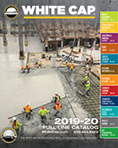OSHA Calls For Heavier Enforcement On Silica
OSHA Launches New NEP On Silica
On February 4, 2020, OSHA published a new National Emphasis Program (NEP) revolving around Respirable Crystalline Silica (RCS). The previous NEP, drafted in 2008, was cancelled in 2017 when OSHA released its revised Crystalline Silica Rule, which rendered the previous NEP inadequate.
Reviewing 10 Years Of Data
OSHA did a deep dive study, utilizing 10 years of data (2008 – 2017) and 13,324 air samples for silica. The result? 14.1% of personal air samples from at-risk work areas registered above the acceptable Permissable Exposure Limit (PEL) during the 10-year period. After the revised silica rule rolled out in October 2017, OSHA did a follow-up 1-year study, based on 2018 inspection data, and found that the silica exposure rate for that year was EVEN HIGHER – at 17.6% of samples registering above PEL.
Construction Workers Are Still At Risk
The increasing rate of non-compliance with the existing silica rule means exposure to silica continues to be a serious risk to a large portion of the construction workforce.
As a result, OSHA has deemed that this new NEP is necessary to emphasize their new areas of focus and move toward compliance to the 2016 standards for general industry, maritime and construction.
Moving forward, 2% of inspections each year will target silica exposure. OSHA expects most of those inspections will occur in construction because most cases of overexposure occur on construction jobsites.
OSHA’s Enforcement Is Ramping Up
The new NEP promises to reduce, or eliminate, workers’ exposure to silica in general industry, maritime, and construction through increased targeted enforcement. This new program calls for inspectors to increase their focus on RCS exposure. Primary targets will be in specific industries most likely to have the highest silica exposure rates.
“Reducing, or eliminating exposure to silica” is nothing new. That’s been on OSHA’s plate since it drafted the first RCS PEL in 1971. What IS new, and what we need to pay attention to now, is the ramp-up in ENFORCEMENT that is about to take place.
OSHA’s Plan For Targeted Inspections
OSHA will be providing its field agents with some new tools, and methods, to determine the most likely targets for inspection. Master Lists will be generated using NAICS codes (North American Industry Classification System) through their “C-Target” App (Construction Inspection Targeting Application).
It should be noted that there are 4 trades being added to the NAICS codes up for inspection:
|
237130 |
Power and Communication Line and Related Structures Construction |
|
238170 |
Siding Contractors |
|
238320 |
Painting and Wall Covering Contractors |
|
238390 |
Other Building Finishing Contractors |
The OSHA Field Operations Manual, (Sept. 13, 2019) lists four priority levels for inspections:
1. Imminent Danger
Conditions where a danger exists that could reasonably cause death or serious physical harm
2. Fatality/Catastrophe
OSHA defines catastrophe as the hospitalization of an employee, an amputation or physical loss of an eye
3. Complaints/Referrals
4. Programmed Inspections
These occur where known hazards exist (combustible dust, chemical processing, falls in construction).
Outreach Programs Prior To Inspections
Local Area Offices will be conducting “Outreach Programs” contacting companies three months prior to scheduled NEP-related inspections. This happens when field agents are aware of known hazards that can result in silica exposure. This information is obtained through OSHA’s C-Target app – which generates a Master Target List consisting of those companies with “the largest number of workers expected to perform tasks associated with RCS overexposures.”
When Master List target results are low in a given area, local agents will determine additional targets through local observation (ie: “drive-by” inspections), and public records such as lists of highway, road, and bridge projects from the local DOT.
“Target List” Removals and Exemptions
“The Regional and Area Offices shall also delete any establishment that has had an inspection where employee exposures to silica have been evaluated within the previous three (3) years, provided either that no serious violations related to silica exposures were cited or that serious violations were cited but a follow-up inspection documented effective abatement of the cited conditions.”
– OSHA’s National Emphasis Program – Respirable Crystalline Silica
Companies may also be exempt by participating in OSHA’s Voluntary Protection Program (VPP), or the Safety and Health Achievement Recognition Program (SHARP), or Pre-Sharp. Even if you are exempt from a programmed inspection, the local Area Office may inform you that you are required to comply with the Respirable Crystalline Silica standard.
A company may qualify for a focused (or “Limited Scope”) inspection if they are actively involved in a Strategic Partnership Program for Worker Safety and Health.
_____
Respirable crystalline silica consists of small silica particles that are generated by cutting, sawing, grinding, drilling, and crushing materials such as stone, rock, concrete, brick, block, and mortar. Inhaling the dust created during these operations can cause silicosis, an incurable lung disease, lung cancer, and chronic obstructive pulmonary disease.
For more information on the health effects from silica exposure, and how employers can protect workers, visit OSHA’s Safety and Health Topics webpage on Crystalline Silica.





This is all about money.
Huge money.
And liability.
nobody gives a rat’s a– about my safety.